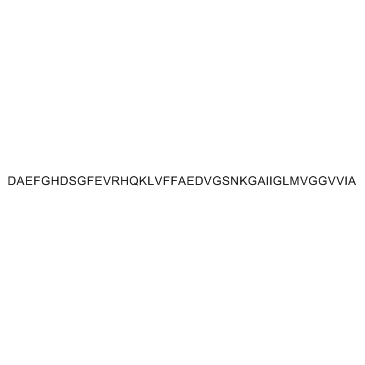β-Amyloid (1-42), rat (Synonyms: Amyloid β-peptide (1-42) (rat/mouse)) |
| Catalog No.GC37984 |
β-Amyloid (1-42), rat is a 42-aa peptide, shows cytotoxic effect on acute hippocampal slices, and used in the research of Alzheimer's disease.
Products are for research use only. Not for human use. We do not sell to patients.

Cas No.: 166090-74-0
Sample solution is provided at 25 µL, 10mM.
β-Amyloid (1-42), rat is a 42-aa peptide, shows cytotoxic effect on acute hippocampal slices, and used in the research of Alzheimer's disease. Amyloid-β[1]
β-Amyloid (1-42), rat shows cytotoxic effect on the hippocampal slices at 20 μM[1]. β-Amyloid (1-42), rat causes morphological changes in NGF-induced PC12 cells, induces formed cell processes to retract in differentiated cells and affect the expression of exons 2/3 in both undifferentiated and differentiated cells[2].
[1]. Mozes E, et al. A novel method for the rapid determination of beta-amyloid toxicity on acute hippocampal slices using MTT and LDH assays. Brain Res Bull. 2012 Apr 10;87(6):521-5. [2]. Lagunes T, et al. Abeta(1-42) induces abnormal alternative splicing of tau exons 2/3 in NGF-induced PC12 cells. An Acad Bras Cienc. 2014 Dec;86(4):1927-34.
Average Rating: 5 (Based on Reviews and 3 reference(s) in Google Scholar.)
GLPBIO products are for RESEARCH USE ONLY. Please make sure your review or question is research based.
Required fields are marked with *




















